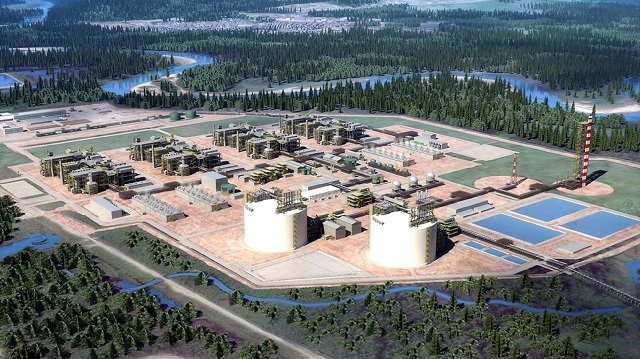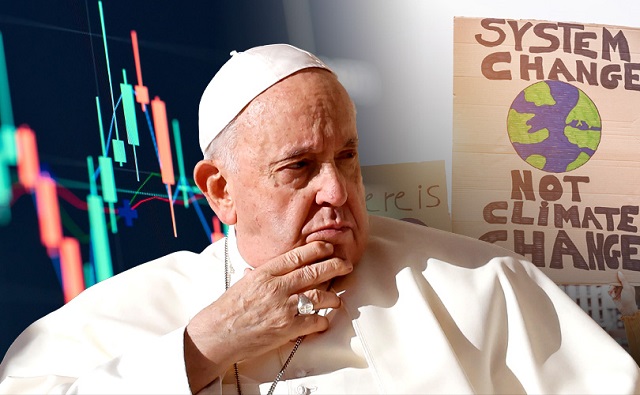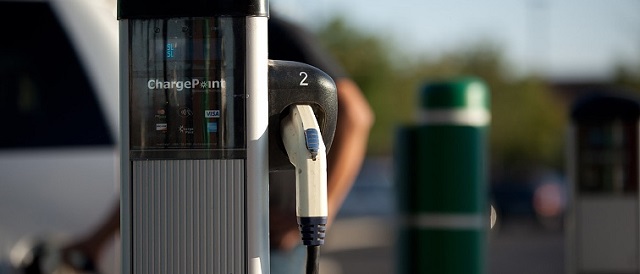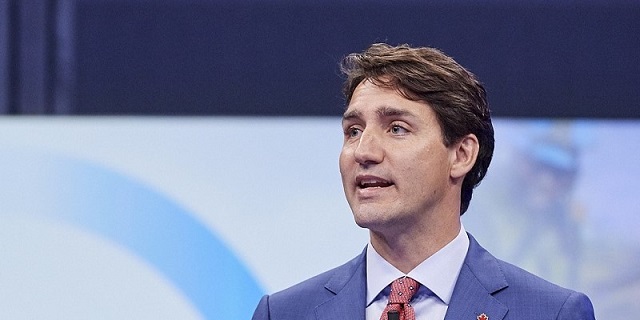Economy
Greater oil and gas export capacity will boost Canadian dollar – and productivity

From the Frontier Centre for Public Policy
By Ian Madsen
It may be overly optimistic to think that Canadian producers could reap CAD$10 in gross profit per GJ, let alone the full almost-$20 price differential. However, even if it is just $5 per GJ, that generates $90 million per day, or almost $33 billion per year.
Canada’s productivity performance has been dismal, having not increased over the last nearly ten years. Economists calculate productivity as the value of output divided by hours worked to generate that output. However, the numerator, being the value of the goods and services produced, has been either neglected, or, when it is actually addressed, is looked at from the perspective of new, ‘high tech’ products and services (information technology, artificial intelligence, or advanced equipment, materials and devices). While all these industries are important, other sectors boost value, too.
Foremost among those sectors is energy – where Canada has outstanding competitive advantages, but still does not get full value for its output. Canada’s oil exports now go entirely to the United States, mostly via pipelines from Alberta and Saskatchewan, with a small amount sent by ship from the Vancouver area to U.S. West Coast customers. All Canadian natural gas exports go entirely to the U.S., which already has a surplus.
The situation severely harms Canadian producers’ bargaining power, which causes them to experience severe discounts on natural gas and oil (whether heavy oil sands, Western Canada Select, ‘bitumen’; or conventional crude oil). Fortunately, the situation will change radically, either next year, or, possibly, later this year.
The reason: Canada LNG, the first of possibly several West Coast liquefied natural gas liquefaction export terminals, should soon commence shipments to foreign buyers (South Korean, Japanese utilities, and others in East Asia). The export capacity of the Kitimat, BC, facility is 1.8 billion cubic feet daily, or 1.8 million Gigajoules, ‘GJ’.
Natural gas now sells for about $2.50/GJ Canadian in Alberta, whereas East Asian recent prices were US$16.70: about CAD$22.25. (It costs several dollars to liquify, load, transport and re-gasify at destination each GJ.) Every dollar of after-cost price differential flows directly to producers, and Canada’s balance of payments. The balance of payments determines our loonie’s value, and, thus, Canada’s standard of living (also, to some extent, inflation).
It may be overly optimistic to think that Canadian producers could reap CAD$10 in gross profit per GJ, let alone the full almost-$20 price differential. However, even if it is just $5 per GJ, that generates $90 million per day, or almost $33 billion per year. As total exports were $596.9 billion in 2022, this would constitute an increase of about 5.5%. This amounts to roughly $1,610 per person in Canada’s current 20.5 million-strong labour force – a big productivity increase for ‘little’ extra work (as everything will have already been built).
Yet, that is not all. There is also the TransMountain, ‘TMX’, pipeline expansion, scheduled for completion this year. Its extra capacity of 590,000 barrels per day is all slated to be exported. If ‘just’ $10 extra per barrel is garnered (the U.S. heavy oil differential exceeds that, typically), that would bring $5.9 million more per day: $2.15 billion annually.
This would also contribute to a better balance of payments (perhaps becoming positive once more), a higher loonie, higher productivity, lower inflation, and a higher standard of living. Australia, which now outperforms Canada, does not interfere with its own massive LNG exports. If Canadian politicians can restrain themselves from blocking more oil or gas pipelines and LNG export terminals, a bright future awaits.
Ian Madsen is the Senior Policy Analyst at the Frontier Centre for Public Policy
Watch Ian Madsen on Frontier Live on X here.
Economy
Canadians experiencing second-longest and third steepest decline in living standards in last 40 years

From the Fraser Institute
From 2019 to 2023, Canadian living standards declined—and as of the end of 2023, the decline had not yet ended, finds a new study published today by the Fraser Institute, an independent, non-partisan Canadian public policy think-tank.
“Despite claims to the contrary, living standards are declining in Canada,” said Grady Munro, policy analyst at the Fraser Institute and co-author of Changes in Per-Person GDP (Income): 1985 to 2023.
Specifically, from April 2019 to the end of 2023, inflation-adjusted per-person GDP, a broad measure of living standards, declined from $59,905 to $58,111 or by 3.0 per cent. This decline is exceeded only by the decline in 1989 to 1992 (-5.3 per cent) and 2008 to 2009 (-5.2 per cent). In other words, it’s the third-steepest decline in 40 years.
Moreover, the latest decline (which comprises 18 fiscal quarters) is already the second-longest in the last 40 years, surpassed only by the decline from 1989 to 1994 (which lasted 21 quarters). And if not stabilized in 2024, this decline could be the steepest and longest in four decades.
“The severity of the decline in living standards should be a wake-up call for policymakers across Canada to immediately enact fundamental policy reforms to help spur economic growth and productivity,” said Jason Clemens, study co-author and executive vice-president at the Fraser Institute.
- Real GDP per person is a broad measure of incomes (and consequently living standards). This paper analyzes changes in quarterly per-person GDP, adjusted for inflation from 1985 through to the end of 2023, the most recent data available at the time of writing.
- The study assesses the length (number of quarters) as well the percentage decline and the length of time required to recover the income lost during the decline.
- Over the period covered (1985 to 2023), Canada experienced nine periods of decline and recovery in real GDP per person.
- Of those nine periods, three (Q2 1989 to Q3 1994, Q3 2008 to Q4 2011, and Q2 2019 to Q2 2022) were most severe when comparing the length and depth of the declines along with number of quarters required for real GDP per person to recover.
- The experience following Q2 2019 is unlike any decline and recovery since 1985 because, though per person GDP recovered for one quarter in Q2 2022, it immediately began declining again and by Q4 2023 remains below the level in Q2 2019.
- This lack of meaningful recovery suggests that since mid-2019, Canada has experienced one of the longest and deepest declines in real GDP per person since 1985, exceeded only by the decline and recovery from Q2 1989 to Q3 1994.
- If per-capita GDP does not recover in 2024, this period may be the longest and largest decline in per-person GDP over the last four decades.
 Read the Full Report
Read the Full Report
Authors:
Economy
Feds spend $3 million to fly 182 politicians and bureaucrats to climate conference

From the Canadian Taxpayers Federation
Author: Ryan Thorpe
Feds trip to COP28 in Dubai cost $3 million
The cost for Canada to send hundreds of people to COP28 in Dubai has doubled, rising to nearly $3 million, according to government records obtained by the Canadian Taxpayers Federation.
Included in those costs is $1.3 million the federal government dished out to host a “Canada Pavilion” at the summit, which featured a rapper performing a song on “climate disinformation,” while giving a shoutout to Environment Minister Steven Guilbeault.
“Nothing screams fighting climate change like flying around the world burning through jet fuel and millions of tax dollars,” said Franco Terrazzano, CTF Federal Director. “Here’s a crazy idea: maybe the feds don’t need to spend $3 million flying 182 politicians and bureaucrats to Dubai.”
The federal government paid for at least 182 people to go to COP28, held from Nov. 30 to Dec. 12, 2023, in Dubai, United Arab Emirates.
A previous report from the National Post pegged the cost for Canada’s delegation at $1.4 million.
But the bill now sits at $2,954,188, including $825,466 for transportation, $472,570 for accommodations and $295,455 for meals and incidentals, according to the records.
The records indicate the cost could rise even higher, as certain invoices and travel claims “have yet to be processed.”
Costs included $1.3 million for a “Canada Pavilion” to “showcase the breadth of Canadian climate leadership.”
At the Canada Pavilion, a Canadian rapper known as Baba Brinkman – the son of Liberal MP Joyce Murray – performed a rap on “climate disinformation.”
“Climate disinformation, get that immunization, the vaccine for bad meme infiltration,” Brinkman rapped. “Climate misinformation, it leads to polarization, which leads to radical conspiracy ideation.”
Environment Minister Steven Guilbeault also received a shoutout during Brinkman’s rap.
“Really? Hosting a rapper half-way around the world to drop rhymes at a government podium will help the environment?” Terrazzano said.
The records were released in response to an order paper question from Conservative MP Dan Mazier (Dauphin-Swan River-Neepawa).
Most of the hotel expenses came from the Dubai Marriott and the Premier Inn at the Dubai Investment Park, with rooms coming in between $150 and $400 per night.
The most expensive digs was a $816-per-night suite at the Pullman Dubai Jumeriah Lakes Towers, a “five-star hotel offering upscale accommodations.”
The Canadian delegation also handed out $650 worth of gifts during the trip.
-

 Addictions13 hours ago
Addictions13 hours agoLiberals shut down motion to disclose pharma payments for Trudeau’s ‘safe supply’ drug program
-

 Energy2 days ago
Energy2 days agoPope Francis calls for ‘global financial charter’ at Vatican climate change conference
-

 Crime2 days ago
Crime2 days agoThe US Canadian border: Greatest number of terrorist watch list individuals being apprehended at northern border
-

 Energy4 hours ago
Energy4 hours agoTech giants’ self-made AI energy crisis
-

 Energy1 day ago
Energy1 day agoNew Report Reveals Just How Energy Rich America Really Is
-

 Automotive1 day ago
Automotive1 day agoBiden’s Climate Agenda Is Running Headfirst Into A Wall Of His Own Making
-

 Economy1 day ago
Economy1 day agoFeds spend $3 million to fly 182 politicians and bureaucrats to climate conference
-

 espionage7 hours ago
espionage7 hours agoThe Scientists Who Came in From the Cold: Canada’s National Microbiology Laboratory Scandal, Part I












